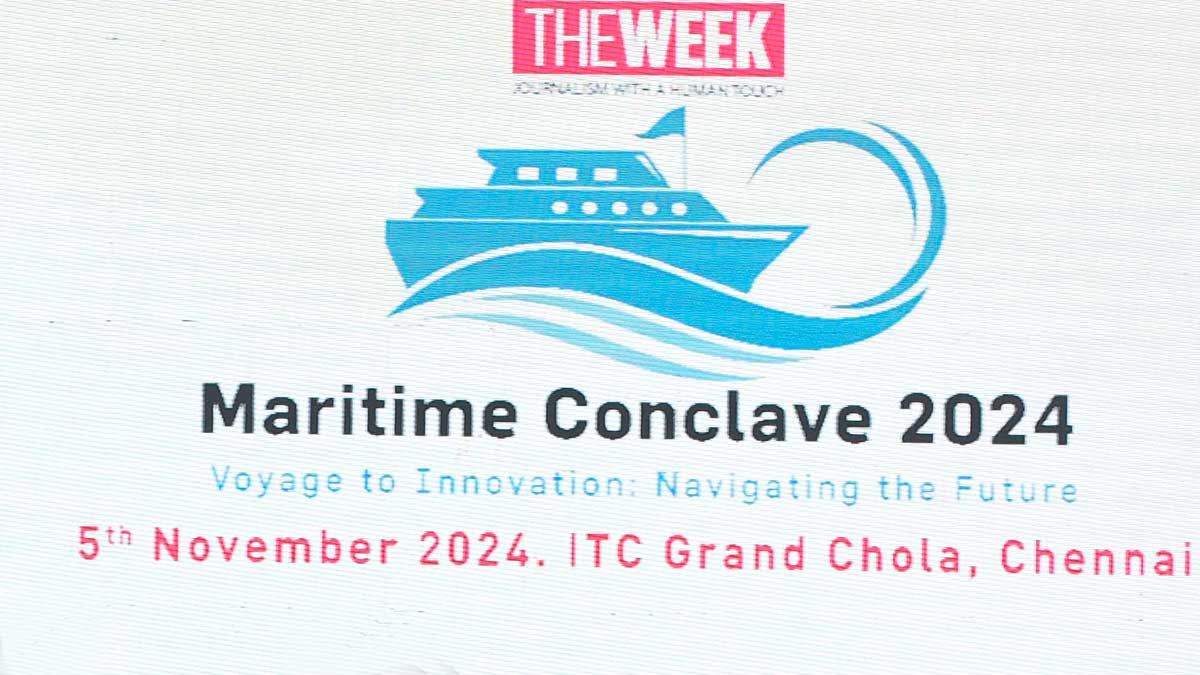One of the government's most important visions of Amrit Kaal 2047 is to develop world class next generation ports, and the government of India through various documents such as the Maritime India vision that was launched by Prime Minister Narendra Modi has realised that maritime is a long term assignment aimed at the larger vision of making India a developed nation by 2047. A road map has been put out for all the participants of the maritime sector—government and private— including different areas such as shipping, inland waterways etc. These were some of the observations by Sunil Paliwal, Chairperson, Chennai Port Trust during a panel discussion on Navigating Future Directions: Growth, Connectivity, Sustainability and the Roadmap at the THE WEEK Maritime Conclave 2024 in Chennai.
Paliwal pointed out that both the Chennai port and the Kamarajar port align with this and have a long term road map. “We have to see what we will do in the next 25 years in terms of infrastructure, connectivity and digitisation. At the same time we are aware of the implications of climate change. These things are not static—as to when Kamarajar port started its operations in June 2001 it was a cold port and now it is a multi cargo port. Kamarajar port is situated outside the city and it is a new port and only 25 years old. We are now handling our cargo handling capacities and we should be able to reach around 178 million tonnes per annum by 2047 from the current 58 million tonnes,” remarked Paliwal.
Also read
- Have transformed India’s shoreline in last decade, says PM Narendra Modi
- Union fisheries ministry adjudges Kerala 'Best marine state', J&K 'Best UT'
- Green fuel, energy efficient measures and use of technology can help reduce carbon emissions in maritime sector: Experts
- THE WEEK Maritime Conclave 2024: 'The Haldia access channel will be a game changer', says Inland Waterways Authority chairman
He informed that at Chennai port they are aiming to handle the biggest vessels of the world. They would also focus on increasing port connectivity to the Chennai port. He said that they were already in the heart of the city and in association with the NHAI they are putting up an elevated corridor and the work is already on and even if cargo cannot be brought easily inside the port then there is a multi modal logistics park that is being developed at Mappedu. They also have a train shed at Jollarpettai where cargo can be assembled and re-assembled. On the other hand, Kamarajar port is also looking at connectivity. “We are also working on soft solutions and in Chennai port we are also rolling out Enterprise Business Solution (EBS). Kamarajar port has also developed its own port handling solution,” added Paliwal.
During the panel discussion, Malini Shankar, Vice Chancellor, Indian Maritime University empahsised that it is high time that all the stakeholders of the Maritime sector jumped into the pool of research. “The Cochin Ship Yard for instance is leading in R&D and are now building ships for international clients. The Maritime University is a very nascent and is only 13-14 years old. We urge the industry to partner in research. We had this convention to understand the needs and issues of the industry (shipping, waterways and logistics) and what needs to be done. We got ideas from it,” remarked Shankar.
She also informed that recently a patent was filed by the IMU Kolkata campus jointly done with private corporation. “We are now building the capacity to do research. Ship building requires trained manpower as it is not available. An ITI can be identified and could be upskilled for ship building. At the same time we also need to have clusters for ports and ship building ship yards as there is non availability of parts, spare parts and smaller things that can be made locally. We have had for instance a discussion with the government of Tamil Nadu for a cluster in Coimbatore. Our university has also started an incubation centre as well,” said Shankar.
Paliwal, meanwhile, added that maritime sector had shown excellent coordination between academia and the industry. “For instance earlier when we use to put in a berth or a terminal in a port we in case we required simulation studies we had to go to countries such as the Netherlands but now we can use the the same thing at IIT Madras,” said Paliwal.
Another panelist Jayant Singh, Project Director (Infrastructure) NITI Aayog felt that whatever the maritime sector provides is a service which has to be cheap and efficient. He said that the problem with a country like India is that over last few decades it had not looked at its infrastructure very seriously and a lot of catching up needed to be done. “The quantum of FDI in the port sector has come up and but there is a lot of scope for improvement. One thing we need to address is the multi modality seamless integration and connectivity between the shipping and the hinterland. There is also a logistics challenge which needs to be addressed is the empty return ratio --one way loaded one way empty. At the same time there should be better synergy between the central and the state government in the maritime sector. There is however immense opportunity as the maritime sector is the fastest growing part in GDP the world over,” pointed out Singh.



